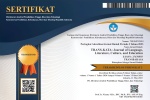The Analysis of Translation Techniques in Translating Fairytale Story “The Adventure of Pinocchio” (English-Indonesian Version)
DOI:
https://doi.org/10.54923/jllce.v3i2.12Keywords:
Translation, translation techniques, fairy talesAbstract
This research aims to analyze the translation techniques employed in the English-Indonesian translation of Carlo Collodi's "The Adventure of Pinocchio." By utilizing Molina and Albir's translation techniques, the study explores the specific methods used by the translator, Lulu Wijaya. The objective of this research is to gain insights into the translation techniques utilized in fairy tales and their implications for cross-cultural communication and children's literature. Using a qualitative approach, data were collected through the analysis of documents. The researcher identified 312 instances of translation techniques, which were categorized into nine types. These included adaptation (62 cases), compensation (71 cases), borrowing (1 case), amplification (3 cases), discursive creation (4 cases), established equivalent (1 case), literal translation (150 cases), modulation (6 cases), and reduction (14 cases). Notably, the most prevalent technique employed by Lulu Wijaya was literal translation. The findings of this research shed light on the prevalent use of literal translation in the translation of fairy tales, specifically "The Adventure of Pinocchio." Understanding these translation techniques is valuable for the field of translation studies, providing insights into the challenges and considerations involved in translating children's literature. Furthermore, these findings have implications for cross-cultural communication and the effective conveyance of meaning to young readers. This research contributes to the understanding of translation techniques in fairy tales, emphasizing their significance and potential applications in the broader context of literature and intercultural exchange.
Downloads
References
Corbin, J., & Strauss, A. (2008). Basics of Qualitative Research: Techniques and Procedures for Developing Grounded Theory (3rd ed.). Thousand Oaks: Sage Publications, Inc.
Ferreira, A., Schwieter, J. W., & Festman, J. (2020). Cognitive and Neurocognitive Effects From the Unique Bilingual Experiences of Interpreters. Frontiers in Psychology, 11, 548755. doi: 10.3389/fpsyg.2020.548755
Kardimin. (2013). Pintar menerjemah: Wawasan teoritik dan praktek. Yogyakarta: Pustaka Pelajar.
Kaushik, N. (2016, June 8). Difference Between How and Why. Difference Between Similar Terms and Objects. http://www.differencebetween.net/language/grammar-language/difference-between-how-and-why/
Korpal, P. (2021). The Neurocognition of Translation and Interpreting by Adolfo M. García. Interpreting and Society, 1(1), 107–110. doi: 10.1177/27523810211033688
Kumar, R. (2011). Research Methodology: A Step by Step Guide for Beginners. Los Angeles, CA: SAGE Publications Ltd.
Liangqiu, L., & Donghui, W. (2018). A Study of Subtitle Translation from the Perspective of Skopos Theory: Youth Film as a Case Study. International Journal of Applied Linguistics and Translation, 4(2), 26-30. https://doi.org/10.11648/j.ijalt.20180402.11
Mehassouel, E., & Benlakdar, M. (2019). Translating Cultural References in Children’s Literature. El-Wahat for Research and Studies Review, 2(2), 1082-1098. doi: 10.54246/1548-012-002-049
Merriam-Webster. (n.d.). Bravo. In Merriam-Webster.com dictionary. Retrieved May 20, 2022, from https://www.merriam-webster.com/dictionary/bravo
Merriam-Webster. (n.d.). Good day. In Merriam-Webster.com dictionary. Retrieved May 21, 2022, from https://www.merriam-webster.com/dictionary/good%20day
Merriam-Webster. (n.d.). Good luck. In Merriam-Webster.com dictionary. Retrieved May 21, 2022, from https://www.merriam-webster.com/dictionary/good%20luck
Merriam-Webster. (n.d.). Mullet. In MacmillanDictionary.com. Retrieved May 20, 2022, from https://www.macmillandictionary.com/dictionary/british/mullet
Miles, M. B., Huberman, A. M., & Saldaña, J. (2020). Qualitative data analysis: A methods sourcebook (4th ed.). Thousand Oaks: Sage Publications.
Molina, L., & Albir, A. H. (2002). Translation Technique Revisited: A Dynamic and Functionalist Approach. Meta: Journal des Traducteurs/Meta: Translator's Journal, 47(4), 498-512. Retrieved from http://www.erudit.org/revue/meta/2 002/v47/n4/008033ar.pdf
Munday, J. (2016). Introducing translation studies: Theories and applications. England: Routledge.
Nababan, M. R. (2008). Teori Menerjemah Bahasa Inggris. Yogyakarta: Pustaka Pelajar.
Nadar, F. X. (2007). Paham dan Terampil Menerjemahkan. Yogyakarta: Gajah Mada University Press.
Palma, S. (2019). Entitled to a Happy Ending: Fairy-Tale Logic from 'Beauty and the Beast' to the Incel Movement. Marvels & Tales, 33(2), 319-337. doi: 10.13110/marvelstales.33.2.0319
Sugiyono. (2014). Metode Penelitian Pendidikan: Pendekatan Kuantitatif, Kualitatif, dan R&D. Bandung: CV Alfabeta.
Visikoknox-johnson, L. (2016). The Positive Impacts of Fairy Tales for Children. Hohonu, 14. Retrieved from https://hilo.hawaii.edu/campuscenter/hohonu/volumes/documents/ThePositiveImpactsofFairyTalesforChildrenLeilaniVisikoKnox-Johnson.pdf
Downloads
Published
How to Cite
Issue
Section
License
Copyright (c) 2023 The Author(s)

This work is licensed under a Creative Commons Attribution-ShareAlike 4.0 International License.





